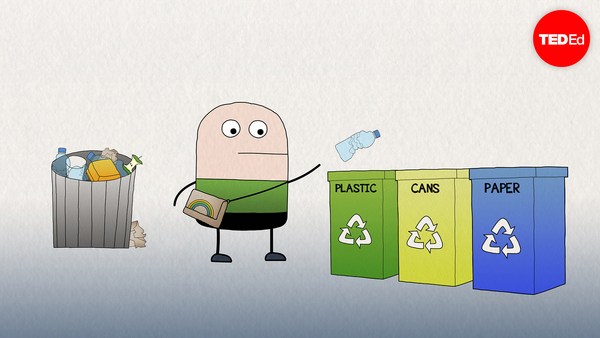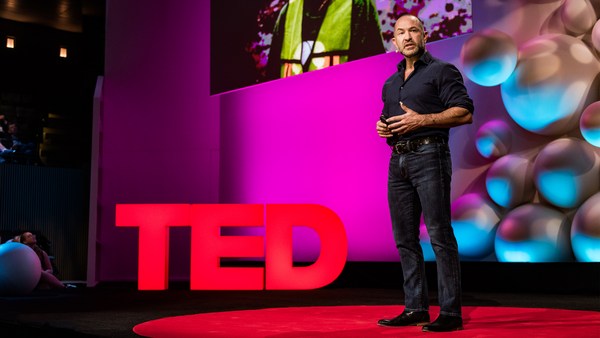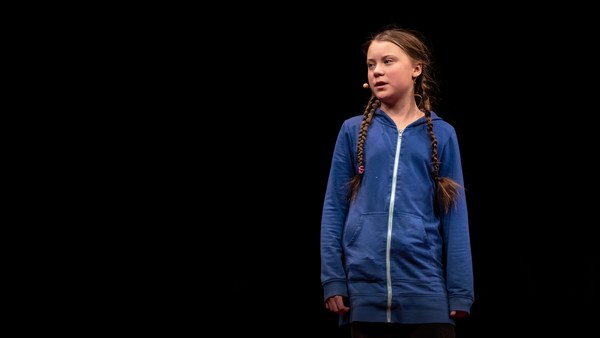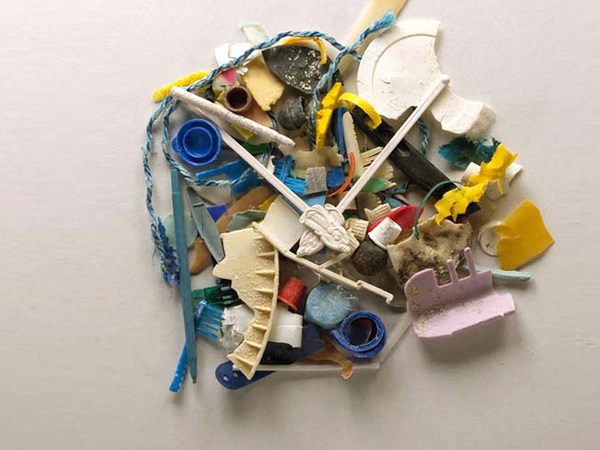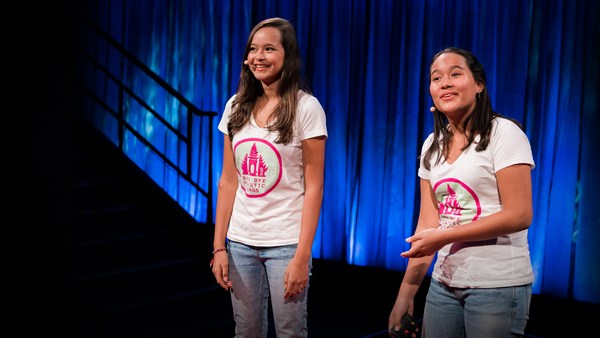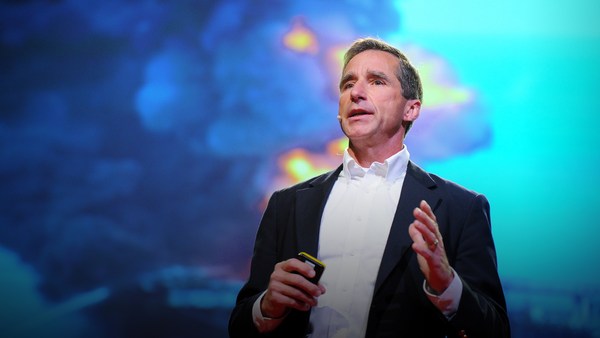Plastics: you know about them, you may not love them, but chances are you use them every single day. By 2050, researchers estimate that there will be more plastic in the ocean than fish.
Despite our best efforts, only nine percent of all plastic we use winds up being recycled. And even worse, plastic is incredibly tough and durable and researchers estimate that it can take anywhere from 500 to 5,000 years to fully break down. It leaches harmful chemical contaminants into our oceans, our soil, our food, our water, and into us.
So how did we wind up with so much plastic waste? Well, it's simple. Plastic is cheap, durable, adaptable, and it's everywhere. But the good news is there's something else that's cheap, durable, adaptable and everywhere. And my research shows it may even be able to help us with our plastic pollution problem.
I'm talking about bacteria. Bacteria are microscopic living beings invisible to the naked eye that live everywhere, in all sorts of diverse and extreme environments, from the human gut, to soil, to skin, to vents in the ocean floor, reaching temperatures of 700 degrees Fahrenheit. Bacteria live everywhere, in all sorts of diverse and extreme environments. And as such, they have to get pretty creative with their food sources. There's also a lot of them. Researchers estimate that there are roughly five million trillion trillion -- that's a five with 30 zeros after it -- bacteria on the planet. Now, considering that we humans produce 300 million tons of new plastic each year, I'd say that our plastic numbers are looking pretty comparable to bacteria's.
So, after noticing this and after learning about all of the creative ways that bacteria find food, I started to think: could bacteria in plastic-polluted environments have figured out how to use plastic for food? Well, this is the question that I decided to pursue a couple of years ago. Now, fortunately for me, I'm from one of the most polluted cities in America, Houston, Texas.
(Laughs)
In my hometown alone, there are seven EPA-designated Superfund sites. These are sites that are so polluted, that the government has deemed their cleanup a national priority. So I decided to trek around to these sites and collect soil samples teeming with bacteria. I started toying with a protocol, which is fancy science talk for a recipe. And what I was trying to cook up was a carbon-free media, or a food-free environment. An environment without the usual carbons, or food, that bacteria, like us humans, need to live.
Now, in this environment, I would provide my bacteria with a sole carbon, or food, source. I would feed my bacteria polyethylene terephthalate, or PET plastic. PET plastic is the most widely produced plastic in the world. It's used in all sorts of food and drink containers, with the most notorious example being plastic water bottles, of which we humans currently go through at a rate of one million per minute. So, what I would be doing, is essentially putting my bacteria on a forced diet of PET plastic and seeing which, if any, might survive or, hopefully, thrive.
See, this type of experiment would act as a screen for bacteria that had adapted to their plastic-polluted environment and evolved the incredibly cool ability to eat PET plastic. And using this screen, I was able to find some bacteria that had done just that. These bacteria had figured out how to eat PET plastic.
So how do these bacteria do this? Well, it's actually pretty simple. Just as we humans digest carbon or food into chunks of sugar that we then use for energy, so too do my bacteria. My bacteria, however, have figured out how to do this digestion process to big, tough, durable PET plastic.
Now, to do this, my bacteria use a special version of what's called an enzyme. Now, enzymes are simply compounds that exist in all living things. There are many different types of enzymes, but basically, they make processes go forward, such as the digestion of food into energy. For instance, we humans have an enzyme called an amylase that helps us digest complex starches, such as bread, into small chunks of sugar that we can then use for energy. Now, my bacteria have a special enzyme called a lipase that binds to big, tough, durable PET plastic and helps break it into small chunks of sugar that my bacteria can then use for energy. So basically, PET plastic goes from being a big, tough, long-lasting pollutant to a tasty meal for my bacteria. Sounds pretty cool, right?
And I think, given the current scope of our plastic pollution problem, I think it sounds pretty useful. The statistics I shared with you on just how much plastic waste has accumulated on our planet are daunting. They're scary. And I think they highlight that while reducing, reusing and recycling are important, they alone are not going to be enough to solve this problem. And this is where I think bacteria might be able to help us out.
But I do understand why the concept of bacterial help might make some people a little nervous. After all, if plastic is everywhere and these bacteria eat plastic, isn't there a risk of these bacteria getting out in the environment and wreaking havoc? Well, the short answer is no, and I'll tell you why. These bacteria are already in the environment. The bacteria in my research are not genetically modified frankenbugs. These are naturally occurring bacteria that have simply adapted to their plastic-polluted environment and evolved the incredibly gnarly ability to eat PET plastic.
So the process of bacteria eating plastic is actually a natural one. But it's an incredibly slow process. And there remains a lot of work to be done to figure out how to speed up this process to a useful pace. My research is currently looking at ways of doing this through a series of UV, or ultraviolet, pretreatments, which basically means we blast PET plastic with sunlight. We do this because sunlight acts a bit like tenderizer on a steak, turning the big, tough, durable bonds in PET plastic a bit softer and a bit easier for my bacteria to chew on.
Ultimately, what my research hopes to do is create an industrial-scale contained carbon-free system, similar to a compost heap, where these bacteria can thrive in a contained system, where their sole food source is PET plastic waste. Imagine one day being able to dispose of all of your plastic waste in a bin at the curb that you knew was bound for a dedicated bacteria-powered plastic waste facility. I think with some hard work this is an achievable reality.
Plastic-eating bacteria is not a cure-all. But given the current statistics, it's clear that we humans, we could use a little help with this problem. Because people, we possess a pressing problem of plastic pollution. And bacteria might be a really important part of the solution.
Thank you.
(Applause)
